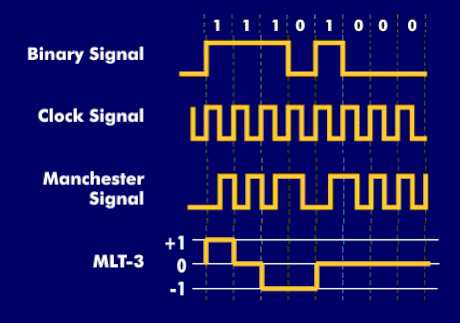Ethernet 1000 Base T vs. Ethernet 1000 Base TX
The difference between Ethernet 1000 Base T and Ethernet 1000 Base TX protocols lies in the method of data transmission and the cables used.
Ethernet 1000 Base T:
- Cable type: Ethernet 1000 Base T uses twisted pair cables of category 5e (or higher) for data transmission.
- Transmission distance: The maximum distance between devices is 100 meters.
- Modulation method: It utilizes Pulse Amplitude Modulation 5 (PAM5) for data transmission.
Ethernet 1000 Base TX:
- Cable type: Ethernet 1000 Base TX also employs twisted pair cables of category 5e (or higher), but only two pairs in the cable are used for data transmission.
- Transmission distance: The maximum distance between devices is 100 meters.
- Modulation method: It uses Multi-Level Transmit 3 (MLT-3) modulation method for data transmission.
Both protocols provide a data transmission speed of 1 Gigabit per second (1 Gbps). However, Ethernet 1000 Base T uses all four pairs of the twisted pair cable, whereas Ethernet 1000 Base TX uses only two pairs. This allows Ethernet 1000 Base TX to use the cable more efficiently, but it is less resistant to interference compared to Ethernet 1000 Base T due to the use of the MLT-3 modulation method.
Since Ethernet 1000 Base TX utilizes only two pairs, it is recommended to use category 6 or higher cables to ensure optimal performance. Category 6 cable has better capability to handle high data transmission frequencies, making it more suitable for 1000 Base TX, especially over long distances or in environments with high levels of interference.
Ethernet 1000Base-TX uses the first and second pairs of the category 6 twisted pair cable (or higher) for data transmission at a speed of 1 gigabit per second (1 Gbps). These pairs are denoted as pair 1 and pair 2 . Pairs 3 and 4 are not used in this data transmission protocol. However, you can use the third and fourth pairs for other purposes such as voice transmission (e.g., in VoIP technology), video signal transmission (e.g., in surveillance systems), or for power and data transmission (e.g., in Power over Ethernet technology). These pairs can be utilized for other tasks based on your specific network needs.
The Ethernet 1000Base-TX protocol is supported by various network devices, including computers, servers, network switches, routers, network cards, and other network equipment. Almost all modern computers and network devices support this protocol as it is a standard for Gigabit Ethernet networks.
Difference between MLT-3 and PAM5:
MLT-3 (Multi-Level Transmit 3) can operate at higher frequencies compared to PAM5 (Pulse Amplitude Modulation 5) due to its modulation characteristics and signal spectrum. The ability of MLT-3 to more efficiently use the signal's frequency spectrum is the reason for this. It allows information to be compactly placed in the spectrum, increasing the data transmission speed for the same bandwidth.

MLT-3 uses three amplitude levels to represent data, making it more sensitive to changes in signal amplitude in the cable. In the presence of interference, this can lead to errors in data transmission, especially over long distances or in conditions with high levels of interference.

In the case of PAM5, the amplitude levels are more diverse (5 levels), allowing better differentiation of signals and making it less sensitive to certain types of interference. However, it's worth noting that PAM5 is used in the Ethernet 1000Base-T protocol, which utilizes all four pairs of the twisted pair cable for data transmission. Therefore, despite its interference resistance, it may face limitations over long distances due to higher signal loss in lengthy cables
